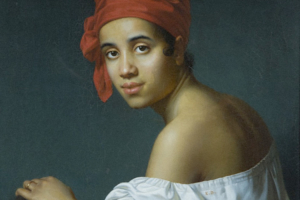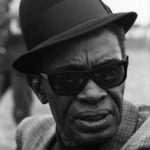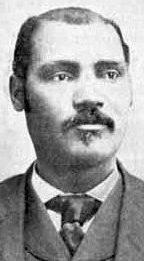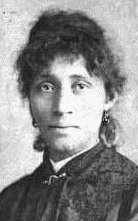Explore the Underground Railroad’s ‘great central depot’
From Harriet Tubman to Gerrit Smith, abolitionists in central New York ushered thousands of escaped slaves to freedom.
(National Geographic) A mere mention of Harriet Tubman or Fredrick Douglass conjures up images of former slaves, abolitionists and the struggle for freedom for enslaved Africans. Both New York residents, Tubman was from Auburn and Douglass from Rochester, they directed thousands of slaves to freedom.
But less is widely known about the role central New York played in creating the “underground railroad,” a network of safe houses and routes, from points in the southern United States to the country’s northern borders, used during the 1800s to get runaway slaves to freedom in free states and Canada.
Curator of history for the Onondaga Historical Association, Robert Searing, says Syracuse, New York became the “great central depot” of the Underground Railroad largely due “to the intellectual and religious changes sweeping through what was then a system of villages until the city was incorporated in 1848.” (more)
The Free People of Color of Pre-Civil War New Orleans
Before American concepts of race took hold in the newly-acquired Louisiana, early 19th-century New Orleans had large population of free people of color.
(JSTOR Daily) New Orleans is unique among American cities for its complicated colonial and racial history. The city was French and then Spanish before Louisiana became an American territory in 1803. A large population of free people of color, gens de couleur libres, lived amid enslaved people of color. Some of these gens were quite well off; a few owned slaves themselves. There was, as geographer Amy R. Sumpter writes, a “tripartite racial structure and racial fluidity” that narrowed and tightened with statehood (1812) and absorption of American definitions of race.
From the beginning, French and Spanish colonial conceptions of racial categories were much looser than those in the English colonies. The first slave ship arrived in Louisiana in 1719. The French, who controlled the colony from 1682-1763, had a Code Noir that governed relations between Africans and Europeans and regulated emancipation. The distinction between free and unfree people of color was written into this law, with the free people of color legally equivalent to whites. Slaves, meanwhile, could gain freedom in numerous ways—for instance, by defending the colony or teaching a master’s children. (more)
U.S. Army’s all-black, all-female WWII battalion may receive a Congressional Gold Medal
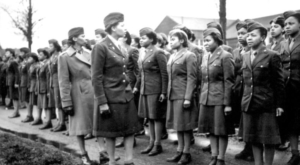 (ConnectingVets.com) The women of the U.S. Army’s first and only all-African-American, all-female WWII unit could be awarded the Congressional Gold Medal, thanks to legislation introduced Wednesday.
(ConnectingVets.com) The women of the U.S. Army’s first and only all-African-American, all-female WWII unit could be awarded the Congressional Gold Medal, thanks to legislation introduced Wednesday.
The 6888th Central Postal Directory Battalion, also known as the “Six-Triple-Eight, ” was a segregated unit that served in Europe during World War II. Huddled in damp, rat-infested warehouses, some 800 women worked tirelessly to process about 65,000 pieces of mail per shift, ensuring soldiers on the ground would receive messages from their loved ones back home.
Sen. Jerry Moran (R-Kan.) recently introduced the bill that would highlight the contributions of the historic unit with a Congressional Gold Medal.
“These brave women and their service to our country deserve to hold a special spot in history and I will continue working with my colleagues in a bipartisan manner to make certain the Senate does our part in honoring their service and sacrifice,” Moran said in a statement. (more)
TIPHC Bookshelf
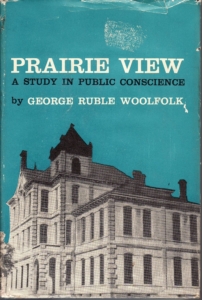 Published scholarship on black history in Texas is growing and we’d like to share with you some suggested readings, both current and past, from some of the preeminent history scholars in Texas and beyond. We invite you to take a look at our bookshelf page – including a featured selection – and check back as the list grows. A different selection will be featured each week. We welcome suggestions and reviews. This week, we offer, “Prairie View, A Study In Public Conscience,” by George Ruble Woolfolk.
Published scholarship on black history in Texas is growing and we’d like to share with you some suggested readings, both current and past, from some of the preeminent history scholars in Texas and beyond. We invite you to take a look at our bookshelf page – including a featured selection – and check back as the list grows. A different selection will be featured each week. We welcome suggestions and reviews. This week, we offer, “Prairie View, A Study In Public Conscience,” by George Ruble Woolfolk.
This digitized edition presents the quintessential history of the university’s founding and early years written by the distinguished former Prairie View professor. Woolfolk, a preeminent historian (southern history and African-American studies) and scholar, served at PVAMU for five decades, beginning in 1943 during which time he was chair of the history department, chair of the Division of Social Science, and was listed in Who’s Who in America and noted as one of the Outstanding Educators of America.
In the book, Woolfolk shows the “impetus for public education in Texas from the state’s founding to the Civil War and the introduction of public education for its Negro citizens as a result of the war and reconstruction.”
He writes, in the preface, “This is a study of the development of higher education for the Negro in Texas under the ideology of the land-grant pattern. Conceived as a part of the revolution implicit in the rise of industrialism to prestige and power in the nation with the coming of the Republican Party to control of the national government in 1860, Justin Morrill’s brain-child has meant many things to many people as it took shape in the nation, and especially in the post-bellum South. The elaboration and evolution of this pattern of education has never been definitely explained. This is particularly true in the case of the Negro’s adaptations, subject as they were to the many dynamic factors and forces attendant upon his adjustment to his status as a free man and the efforts to integrate him into the broad pattern of democracy which the creation of these schools was designed to foster.”
This Week in Texas Black History
Mar. 11
 Prairie View A&M University opened its doors on this date in 1878 with an enrollment of eight students, all men, for the first state supported college in Texas for African Americans. The school, located 50 miles northwest of Houston, had its beginnings in the Texas Constitution of 1876, which, in separate articles, established an “Agricultural and Mechanical College” and pledged that “Separate schools shall be provided for the white and colored children, and impartial provisions shall be made for both.” Thus, Alta Vista Agricultural and Mechanical College of Texas for Colored Youth was established on August 14, 1876. Prairie View, a land-grant university authorized under the Morrill Acts of 1862 and 1890, is part of the Texas A&M System.
Prairie View A&M University opened its doors on this date in 1878 with an enrollment of eight students, all men, for the first state supported college in Texas for African Americans. The school, located 50 miles northwest of Houston, had its beginnings in the Texas Constitution of 1876, which, in separate articles, established an “Agricultural and Mechanical College” and pledged that “Separate schools shall be provided for the white and colored children, and impartial provisions shall be made for both.” Thus, Alta Vista Agricultural and Mechanical College of Texas for Colored Youth was established on August 14, 1876. Prairie View, a land-grant university authorized under the Morrill Acts of 1862 and 1890, is part of the Texas A&M System.
Mar. 13
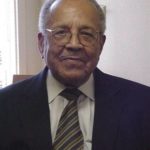 Rev. Claude W. Black passed away on this day in 2009 after serving for 50 years as the pastor of Mt. Zion First Baptist Church in San Antonio, and as a civil rights leader. Black was also a four-term city councilman (1973-1978) and the city’s first black Mayor Pro Tem.
Rev. Claude W. Black passed away on this day in 2009 after serving for 50 years as the pastor of Mt. Zion First Baptist Church in San Antonio, and as a civil rights leader. Black was also a four-term city councilman (1973-1978) and the city’s first black Mayor Pro Tem.
Mar. 15
Bluesman Sam “Lightnin” Hopkins was born on this day in 1912 in Centerville. At age eight he made his first instrument, a cigar-box guitar with chicken-wire strings. By ten he was playing music with his cousin, Texas Alexander, and Blind Lemon Jefferson, who encouraged him to continue. His 60-year career began in the 1920s and he recorded for almost 20 different record companies, played at Carnegie Hall with Pete Seger and Joan Baez and toured with the American Folk Blues Festival. Hopkins also played before Queen Elizabeth in a command performance. Some of his biggest hits included “Short Haired Women / Big Mama Jump!” (1947); “Shotgun Blues,” which went to Number 5 on the Billboard charts in 1950; and “Penitentiary Blues” (1959). Hopkins recorded a total of more than eighty-five albums.
Mar. 15
Richard Henry Boyd was born on this date in 1843. Boyd was a preacher, missionary, entrepreneur, publisher, banker, educator, writer, and Black Nationalist who was born a slave in Noxubee County, Mississippi. Though his slave master christened him Dick Gray, he changed his name to Richard Henry Boyd after the Civil War. He served as a Texas Confederate body servant near the Battle of Chattanooga during the war. In 1869, Richard Boyd became a Baptist minister and in 1872 helped organize the Negro Baptist Convention of Texas. During the 1880s, he attended Bishop College strongly believing in the ideals of Black initiative and self-help for the former slaves.
Mar. 16
Lucy Parsons, socialist and anarchist, was born this day in 1853 in Texas, though accounts differ as to her exact birthplace. Parsons had African American, Native American, and Mexican ancestry. She was a prominent feminist and early civil rights pioneer whose commitment to class struggle brought her to the front lines of the 1886 movement for the eight-hour workday. Parsons led mass hunger demonstrations of homeless and unemployed people in San Francisco and Chicago and was a powerful orator and activist. Considered a dangerous, explosive and robust threat to authorities, the Chicago police labeled Parsons “more dangerous than a thousand rioters.”
Blog: Ron Goodwin, Ph.D., author, PVAMU history professor
Ron Goodwin is an assistant professor of history at Prairie View A&M University. Even though he was a military “brat,” he still considers San Antonio home. Like his father and brother, Ron joined the U.S. Air Force and while enlisted received his undergraduate degree from Texas Lutheran University in Seguin, Texas. After his honorable discharge, he completed graduate degrees from Texas Southern University. Goodwin’s book, Blacks in Houston, is a pictorial history of Houston’s black community. His most recent book, Remembering the Days of Sorrow, examines the institution of slavery in Texas from the perspective of the New Deal’s Slave Narratives.
Recent Posts
The Everlasting Light
Ye are the light of the world. A city that is set on an hill cannot be hid. Neither do men light a candle, and put it under a bushel, but on a candlestick; and it givith light unto all that are in the house. Let your light so shine before men, that they may see your good works, and glorify your Father which is in heaven. — Matthew 5: 14-16
This is the month set aside to honor…(more)
The Return of the Silent Majority
Fifty years ago, in January 1969, Richard Nixon was sworn in as the thirty-seventh president of the United States. His legacy as President was marred by the Watergate investigations and his eventual resignation from office which overshadowed the way in which he won the office. His central campaign rhetoric was designed to garner support from white Southerners (otherwise known in history as the “Silent Majority”) whose racial beliefs leaned heavily towards the support of white…(more)
Submissions wanted
Historians, scholars, students, lend us your…writings. Help us produce the most comprehensive documentation ever undertaken for the African American experience in Texas. We encourage you to contribute items about people, places, events, issues, politics/legislation, sports, entertainment, religion, etc., as general entries or essays. Our documentation is wide-ranging and diverse, and you may research and write about the subject of your interest or, to start, please consult our list of suggested biographical entries and see submission guidelines. However, all topics must be approved by TIPHC editors before beginning your research/writing.
We welcome your questions or comments. Please contact Michael Hurd, Director of TIPHC, at mdhurd@pvamu.edu.

